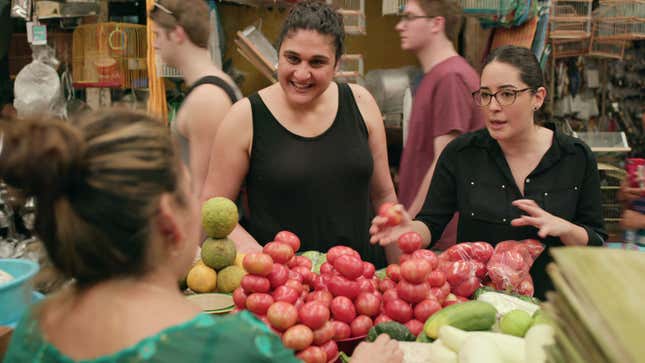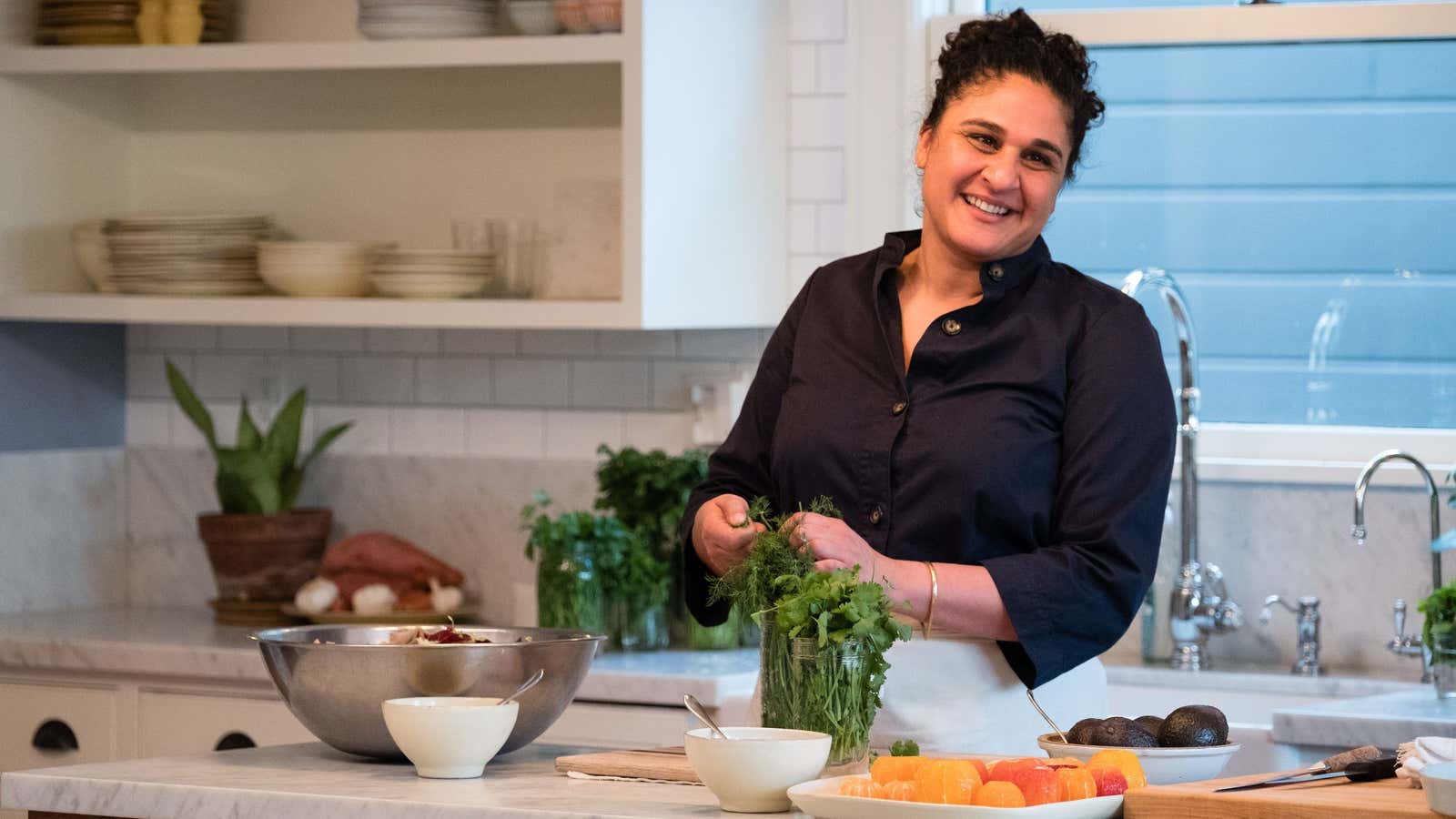Most chefs write cookbooks to show you how to make their food. Samin Nosrat teaches home cooks how to make their own food, just more deliciously.
In her new show on Netflix, Salt, Fat, Acid, Heat (the same name as her seminal 2017 book), the chef and New York Times food columnist shares lessons gleaned from hand-pounding pesto in Italy, gathering seaweed in Japan, and tasting tart citrus in Mexico—and makes each experience feel vitally and immediately relevant to any kitchen.
“I am definitely not the best cook in the world,” she told me over the phone. “I do think what I am uniquely capable of…is translating what happens in the professional kitchen for home cooks. I feel like actually that’s probably what I do in general, is translate things. I’m an idea-distiller, a distillation machine.”
Despite its the globe-spanning ambition, Salt, Fat, Acid, Heat, out today (Oct. 11), doesn’t feel like a travel show, perhaps because while Nosrat’s explorations take her through very different food traditions and techniques, the true destination is always the same—deeper, richer flavor.
“I hope it really lands,” she said, explaining that she would like to make Netflix a home for indispensable content for passionate home cooks. “It paves a way for a new type of show on Netflix, which is about cooking, rather than about eating.”

She’s right: There’s no other food show that is quite like Salt, Fat, Acid, Heat, on Netflix or anywhere. Celebrity-chef-driven cooking shows might inspire viewers to try a new dish, but they lean heavily on individual recipes. Each jewel-like episode of Chef’s Table is an immense pleasure to watch, but there is zero practical knowledge for a home cook to take away. Nosrat’s show isn’t endearingly uptight like America’s Test Kitchen, and she is not nerdily self-conscious like the Food Network’s Alton Brown.
Good-natured curiosity informed by an obsession with cooking technique is the defining feature here—in every scene Nosrat is asking a question, prodding for specifics, jumping in to try her hand at straining parmigiano curds, or dipping seaweed out of the ocean and into a small boat, all the while laughing.
And her adventures serve as an effective visual proof of the central thesis she explores in her 2017 book: “No matter where I go, the same elements make food delicious,” Nosrat says in the trailer for the show. “Salt, fat, acid and heat.”
Nosrat doesn’t call herself a chef, despite her many years in restaurant kitchens (including California’s temple of farm-to-table food, Chez Panisse). Instead she considers herself a teacher, one whose tricks and techniques are “within reach and possible for you at home.” Her mantra has a sort of Michael Pollan-esque simplicity: ”Be thoughtful. Be curious. Good cooking is within reach for everyone.”
The gospel Nosrat teaches in Salt, Fat, Acid, Heat is that any cook who really understands and harnesses those elements in the kitchen can cook delicious food, no recipes required. It’s an idea that evolved over years of work in kitchens, built on the knowledge that comes from frying 100 batches of chicken in a single evening, or prepping vats of vegetables for service, night after night.

In this food-obsessed moment, Nosrat stands out from the piles of cheffy cookbooks that lead home cooks through the elaborate production of a restaurant’s famed dishes. And unlike many globe-trotting TV hosts, her travels are not an eternal quest for either “authenticity” or novelty. Instead, she’s working to illustrate the commonality that good food shares around the world. Rather than teaching viewers the recipe of pavo en escabeche, Japanese fish stew, or crispy Persian rice, she invites them to observe the way these dishes build and balance flavors.
Ultimately, Nosrat wants you to figure out what your personal version of deliciousness is, to discover what your palate is all about: Rosemary, basil, thyme? A light hand with salty flavors? No meat or fish? “I’m not the one who’s at your house, who eats this,” Nosrat said. “You don’t have to do it my way.”
Perfection isn’t the goal; it’s about iteration, process, improvement, and enjoyment. “If I can get people to do anything, it’s try a bunch of different ways and figure out what your way is,” she says. “That’s the amazing thing about cooking and dinner—is that you always get another chance tomorrow.”
